A blocked DPF can be a diesel driver’s worst nightmare. Not only is a DPF very expensive to replace, but It renders the car useless if it needs repair.
Arming yourself with the knowledge of blocked DPF symptoms and what it does is excellent preventative maintenance, so as soon as you notice the first symptom, you can take immediate action, which is just a small amount of your time. It’s also good general knowledge as if you know someone with a diesel car; they will have heard of the elusive problems with a DPF, short for Diesel particulate filter. I, for one, even on my car, have had runnings with a blocked DPF, but I took the steps necessary to perform a regen and solve the problem, which I’ve explained in detail in this article.
What Does a Dpf Do?
A Diesel Particulate Filter (DPF) is a device in the exhaust system that captures soot and other particulate emissions from diesel engines, similar to catalytic converter. Over time, the particles accumulate and need to be removed in a regeneration process. There are two types of regeneration: passive and active.
Passive regeneration occurs naturally when the exhaust temperature is high enough to burn off the soot. This typically happens when the vehicle is driven at high speeds for extended periods, such as on the highway.
Active regeneration is initiated by the engine control unit (ECU) when the DPF reaches a certain level of blockage. The ECU injects fuel into the exhaust system, which raises the temperature and burns off the soot.
This process can take a few minutes to an hour to complete. It’s important to note that if active regeneration is not completed for an extended period, the DPF can become completely blocked, which can cause severe damage to the engine.
What Are the Symptoms of a Blocked Dpf?
The symptoms of a blocked DPF include:
- DPF regen light on
- DPF warning light that won’t go away following regeneration
- Limp mode activated
- Holding back under acceleration
- Clouds of black smoke coming from the exhaust
- A Strong smell of diesel in the cabin
- The stop/Start function is not operating
- Increased fuel consumption
- Struggle to start the engine
- Engine warning light coming on
- Exhaust system overheating (glowing)
It’s important to note that a blocked DPF can have many different symptoms and aren’t limited to one fault in particular. Some of the faults above could be confused with another severe issue with the vehicle. Unless the DPF warning light has come on, do not assume that just because your car has one of the symptoms, the DPF is to blame. If you discover any of the issues on the list, it is wise to get a professional mechanic to check them out. They will be able to confirm where the fault lies.
Why Does a Dpf Get Blocked?
A Diesel Particulate Filter (DPF) can become blocked like any other filter but, sadly, can’t be changed as easily as the others. The main reason the DPF gets clogged is frequent short journeys, such as a quick trip to drop the kids off at school. This causes a blockage because the DPF’s main function is to trap and store soot to burn off, but if it does not reach the required temperature for regeneration, the soot will not burn away. This leads to an accumulation of soot, which will cause the blockage and DPF light to illuminate on the dashboard.
Active or passive regeneration generally occurs when the exhaust gas temperatures reach 1112 degrees Fahrenheit (600 degrees Celsius).

How Do You Fix a Blocked Dpf?
Depending on how badly it’s blocked, which you may not be able to tell without trying the below in order, there are three ways to fix a blocked DPF, or at least this is my process for rectifying a blocked DPF.
- Perform a regen – DPF regeneration is automatic when a vehicle travels above 64+ kph (40+mph) for more than 30 minutes. There are no buttons to press or procedures to follow; just drive! I also like to add a DPF targetting fuel treatment into the tank before trying a regen; this helps to break down large soot deposits. Please take this as loose advice because all diesel vehicles have their speeds for regenerating the Diesel Particulate Filter. One important note is that the engine may be louder than usual during a regen, and there may be a noticeable smell.
- Repair – A DPF cleaning service. This involves removing the DPF, flushing, and cleaning the internals with chemicals, which can solve a DPF blockage 90% of the time. You will need to remove the DPF before assessing whether a DPF clean can be performed; if the internals are similar to a catalytic converter and have started disintegrating, you will need to replace it.
- Replace – Replacing the DPF is similar to replacing the catalytic converter, remove the sensors, remove the DPF, and replace. However, be warned, they are not cheap to buy!
Sometimes, the only cure will be to replace the Diesel particulate filter. Unfortunately, that comes with owning a diesel car with components that can fail at any moment.
Can You Drive With a Blocked Dpf?
The bad news is that driving with a blocked DPF could cause costly terminal damage to the engine and other ancillaries, even though you need to drive the car to try and the DPF to perform a regen. If the DPF is blocked, you shouldn’t add to the blockage by driving short journeys; you should only try to do one long drive for regeneration to happen. If it does and this works, the DPF warning light should self-extinguish.
If the regeneration doesn’t happen or the light doesn’t go off, do not continue driving. The car could go into limp mode or shut down completely, which would be dangerous in the wrong situation.
How Do You Prevent a Dpf From Blocking?
Preventative measures are the best form of protection against a blocked DPF and almost all other components in a vehicle, such as an EGR valve. A blocked DPF is not a cheap fix—however, there are a few quick, inexpensive ways to prevent a blockage:
- Purchase a DPF cleaner fuel treatment to be poured into the diesel tank. As you drive, this will help clean the DPF more efficiently. It only needs to be done now and again; depending on how much you drive, refer to the bottle of cleaner for further instructions.
- Go for a long drive for 20 – 30 minutes weekly. This allows the vehicle to get up to working temperature and get the DPF burning off any stored soot. This will work even better if a DPF cleaner fuel treatment is used simultaneously.
Frequently Asked Questions
Do You Need A DPF?
Yes, if your diesel vehicle comes with a DPF, you need to keep it. Removing it is illegal as it affects the car’s performance, the emissions levels, it can damage the engine and void your warranty. Insurance companies may refuse to pay if you’re involved in an accident.
Can You Fix A Blocked DPF Yourself?
You can often fix a blocked DPF yourself by performing a regen. You do this by constantly driving above 64+ kph (40+mph) for 30 minutes.
How Long Does It Take For A DPF To Get Blocked?
There is no set time frame, as everybody’s driving style differs. However, many short journeys over a few months could trigger the warning indicator as a blockage is starting to build.
Will A Blocked DPF Stop A Car From Starting?
Usually, a blocked DPF will not prevent a car from starting. However, if the DPF is severely blocked, it can cause other issues with the engine that may prevent it from starting.
Bottom Line
It is important not to ignore a DPF issue on your car as it can result in an expensive repair. To prevent this, driving for 30 minutes at a speed above 64+ kph (40+mph) every other week is recommended to care for the DPF properly. A DPF is not designed to fail but requires some attention and maintenance. Now that you know the symptoms of a blocked DPF and how to prevent such issues, regularly implementing these practices will significantly reduce the chances of having a costly repair bill.
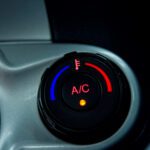

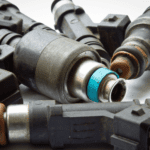
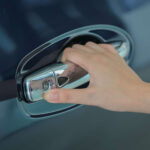
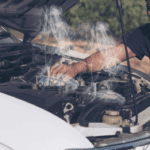
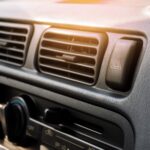
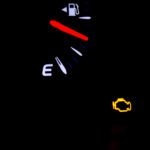
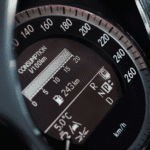
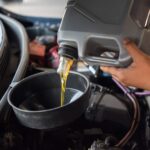

My Honda Civic 1.6 Dtec had to have it‘s DPF removed and sent away for a professional cleaning,I hope this does the trick,after 248,000 kilometers ,do you think U will get lucky?
Thanks for your comment. Having the DPF professionally cleaned is very successful. If it has lasted 248,000 kilometers its done well, let’s hope you get another 248,000!